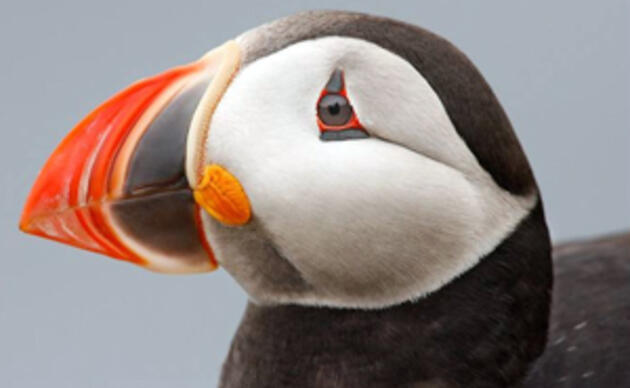Seabird Island News - Vol. 4 - 16 June 2023
Census Two Cents
This past week saw the Gulf of Maine Seabirds Working Group, or GOMSWG for short, Tern Census. The census typically occurs in the week leading up to the start of chick hatch. This year, however, Jenny Island chicks began hatching early! Volunteers and staff scrambled to the island to conduct the census ahead of the expected schedule.
Curious how a census is conducted? Each island is divided into a grid. After lining up fingertip-to-fingertip, researchers and volunteers carefully walk back and forth through each grid, calling out the number of eggs they see in each nest. One person walks behind the line, calling the numbers back and tallying the nests by clutch size. While human error does occasionally occur, the team works together to ensure nests are not missed or double counted. Once all the grids on the island have been counted, the team knows the size of the colony.
This year's results indicate that the islands have either a similar number of nests compared to last year or slightly less. Additionally, clutch size appears to be smaller than last year, although the numbers are still rolling in. No matter the number of nests or eggs found within, territorial terns were defending their nests!
Predators on the Prowl
Pond Island’s predator problems continue. Upon finding 30 dead terns, researchers put on their detective caps and determined an owl and another mink are the prime suspects (one mink has already been removed from Pond Island this season). After marking carcass locations and capturing photos of the crime scene, maybe these two will be ready for starring roles on CSI: Pond Island. The culprits are still on the run, but mortality numbers have steeply declined throughout the week.
Matinicus Rock also did some detective work this week after finding over 40 destroyed eggs during tern productivity check. The culprit there is much smaller than an owl or a mink—it's a Ruddy Turnstone, a small shorebird in the sandpiper family. After the initial discovery of destroyed eggs, researchers are cautiously optimistic at no new signs of Ruddy Turnstone predation. Fingers crossed!
Alcidae Update
Despite another string of somewhat drizzly days, puffins were partying on Seal Island earlier this week! An estimated 1,280 were seen in one day during a resighting stint—and a puffin banded in 1999 was observed by a researcher!
The Stratton Island team spent an exhausting effort searching for guillemot eggs but found only one guillemot burrow with one egg-- “a real breeding hotspot,” ironically wrote a researcher. Over on Outer Green, a guillemot stole the show after dinner, making a landing right outside of the kitchen tent. Researchers came to the rescue and helped the bird back to the beach. All in a day’s work!
Islands have been steadily reporting the discovery of new Razorbill chicks during their productivity
checks, delighting in the sounds of peeping from deep in the Razorbill burrows. Likewise, pufflings are
making themselves known during productivity checks. It’s been noted that this is an especially early year for hatchlings, and there is plenty of speculation as to why some puffins have shifted to an earlier schedule.
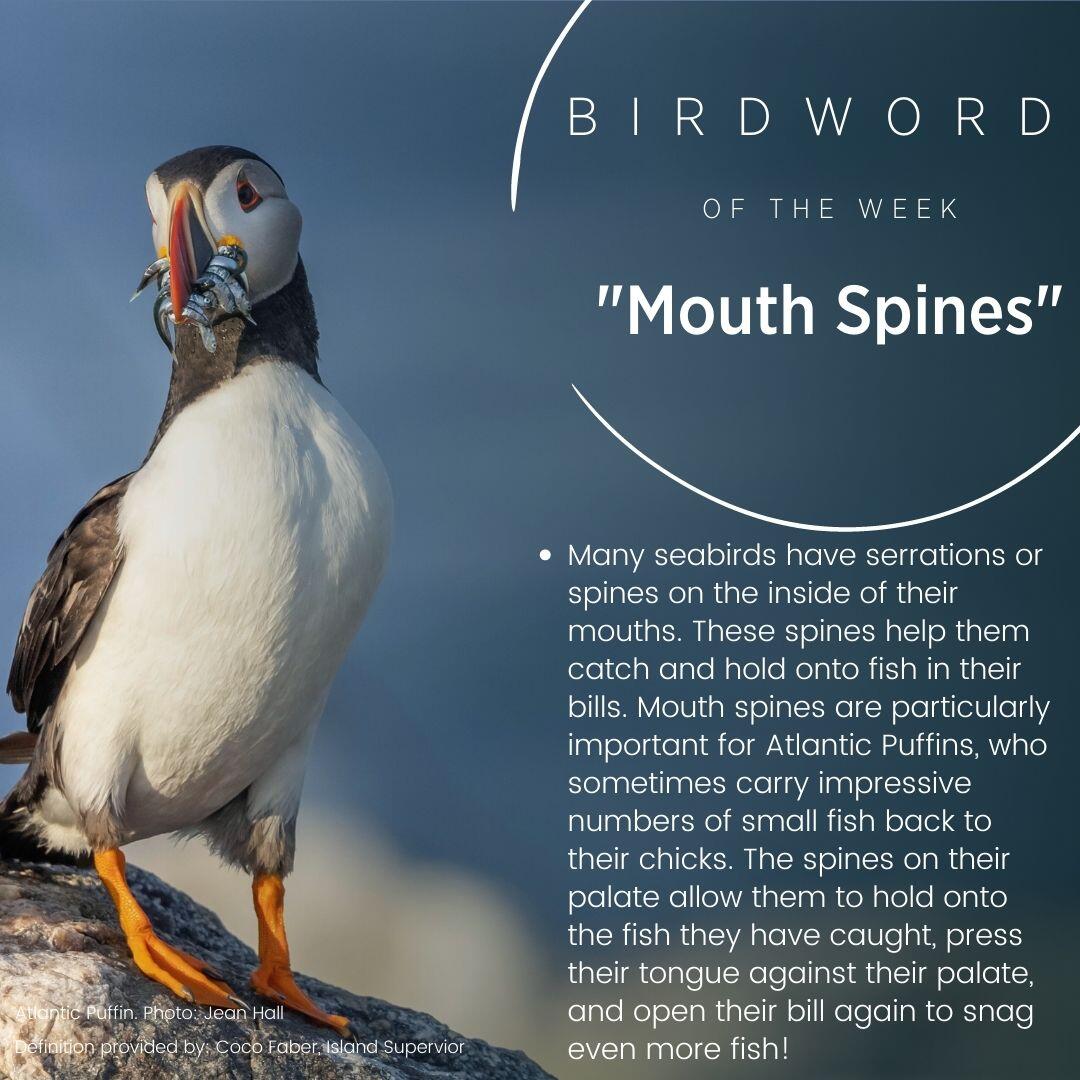
explore.org
We welcomed Willie and Millie’s puffling to the world this week, a record early on-cam hatchling! This year's puffling is named for a notable Audubon naturalist, educator, and vice president of education, Duryea Morton. Morton was an early supporter of Project Puffin, and played a pivotal role in the restoration of puffins here in Maine. He offered Dr. Steve Kress a base of operations at Hog Island Audubon Camp, which he directed from 1971 to 1977. June 13th would have been Duryea Morton's 99th birthday, so it is especially poignant that this year's puffling be a named in his honor.
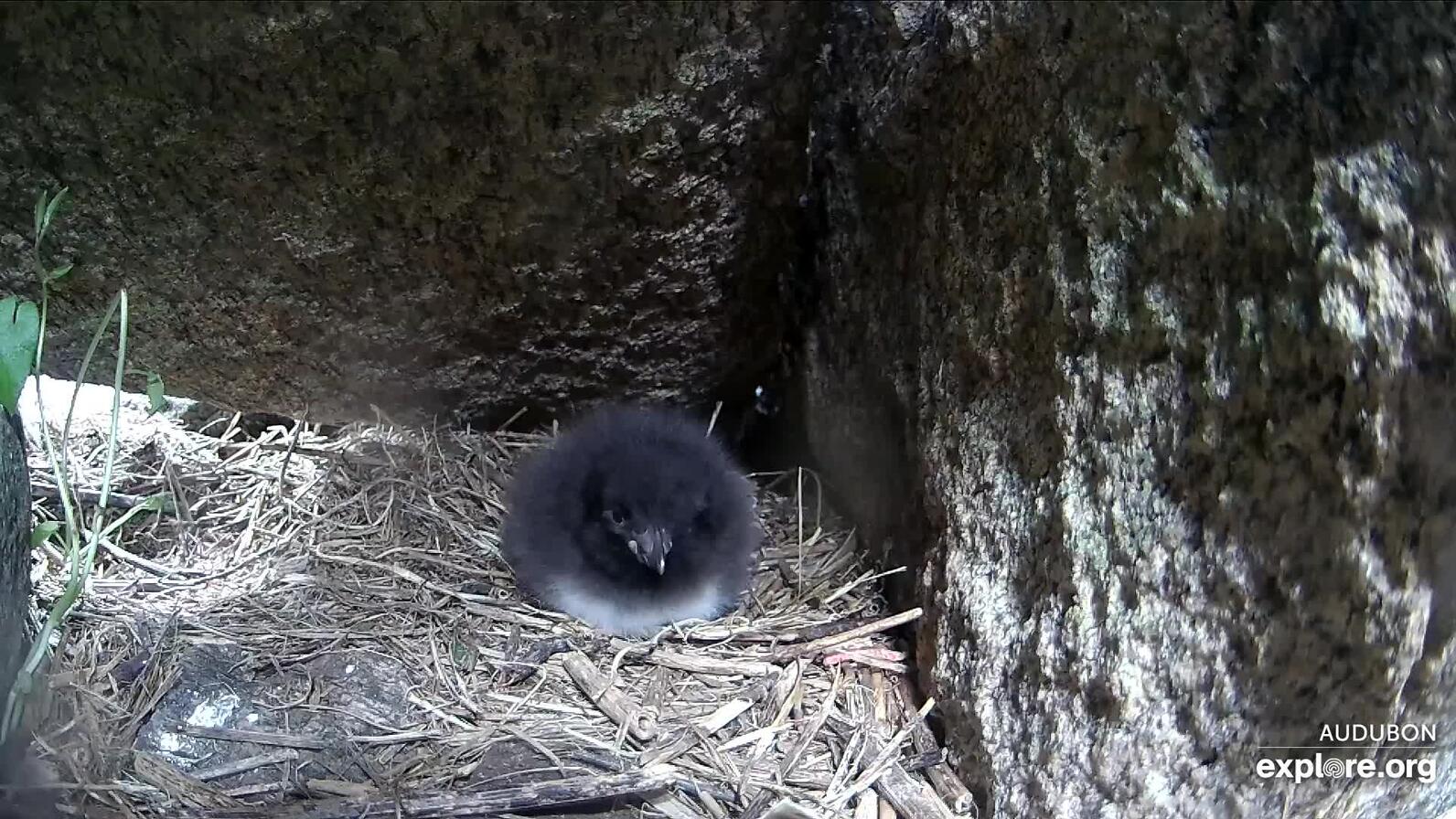
The puffin cams picked up some adorable Razorbill activity this week, with pairs seen canoodling on the boulder berm and loafing ledge cams.
And our three guillemot eggs in the on-cam burrow continue to baffle viewers. It’s been a year of mystery already—we're curious to see how the hatching will play out!
Island Highlights
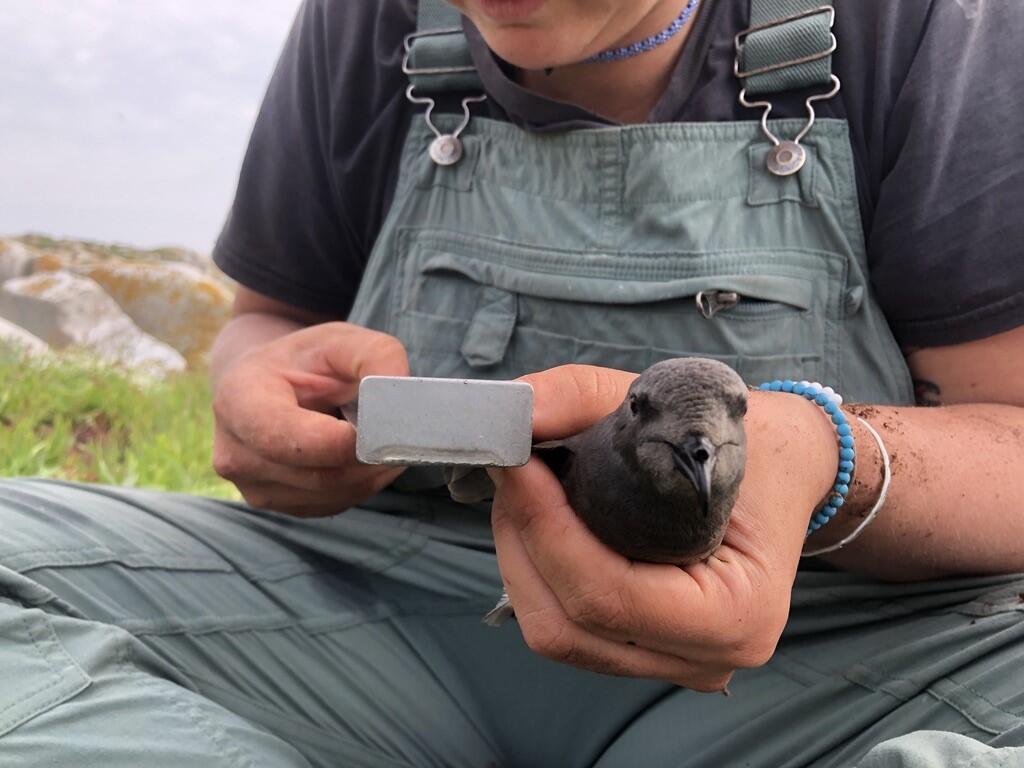
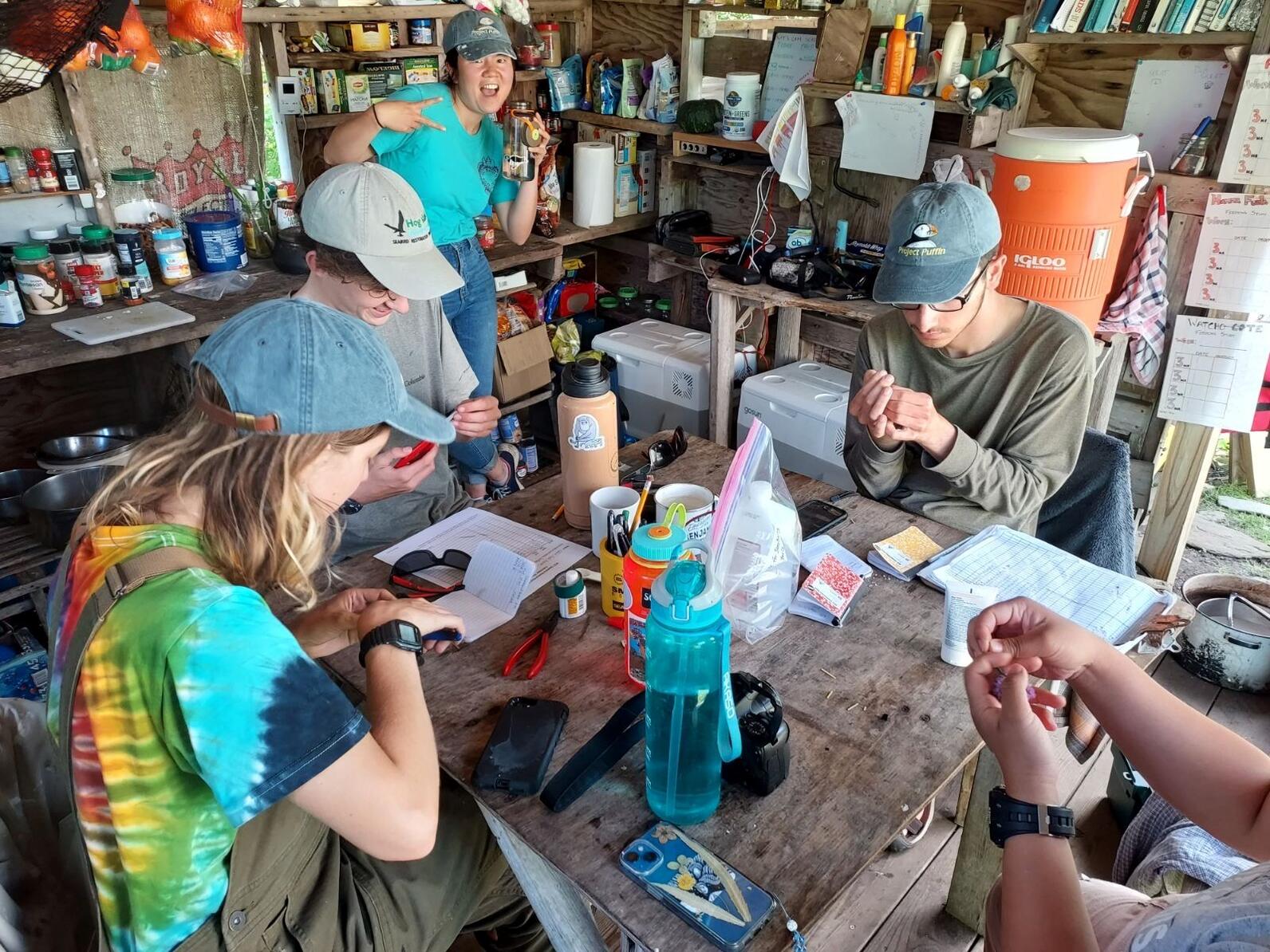
For additional news, please visit the Seabird Island News index page.
Learn about birds and take action
Adopt-A-Puffin
Adopt now and receive a Certificate of Adoption, along with a biography of "your" puffin!
Visitor Center
The Project Puffin Visitor Center (PPVC) is located at 311 Main Street in downtown Rockland, Maine. The center opened its doors officially on July 1, 2006.


